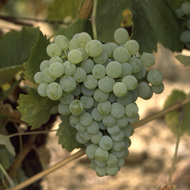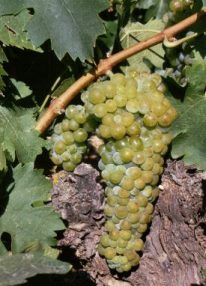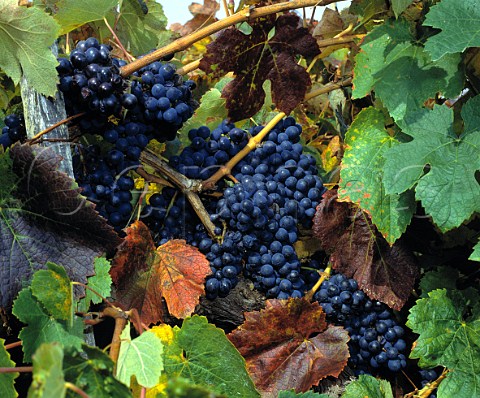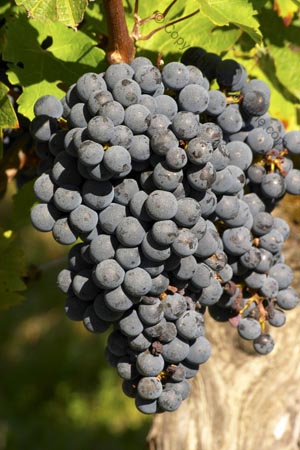
Although many wine producing countries, even those in Europe plant French, Italian and Spanish grape varieties, Portuguese have only now started experimenting with a few. They implicitly believe that their indigenous grapes are every bit as good as their world-famous brethren, albeit less well known, and probably more difficult to pronounce by English and French consumers.
When Portugal joined the European Union, wine research was minimal. Wineries and research institutes simply didn’t have the funds to conduct research. Since then, millions have been poured into in-depth vitivincultural research that has improved vineyard technology and helped young winemakers to produce scientifically and artistically better wines.
Here is a selection of Portugal’s indigenous grape varieties:
Alvarinho – acclaimed as the best white grape variety in northern Portugal Low yielding alvarinho yields aromatic, citrusy, mango and passion fruit smelling full-bodied wines. In can be cellared for up to five years.
The Spanish call it albarino and grow substantial quantities only a few kilometres away from Portugal in northwestern Spain.
Anato vaz – is at home in southern Alentejo, and yields full-bodied, aromatic, minerally and spicy wines. It is generally vinified as a varietal wine, but may be blended with arinto.
Arinto – at home in Bucelas close to the Atlantic Ocean, yields floral, fruity wines, that age well. In the north arinto tends to produce acid-driven wines better suited for blending.
Bical ripens early and has a good acid sugar balance. Planted in Dao and Bairrada, bical wines are generally used for sparkling wine production.
Encruzado – is at home in Dao yielding aromatic, harmonious, citrusy wines of note. Many wineries market a varietal version and another blended with bical under trade names.
Fernao pires (aka. Maria Gomes) – is the most popular of all and is planted in Dao, Douro, and Alentejo.It ripens early and yields abundantly. Fernao pires wines have a floral smell, are full bodied, and may be barrel fermented for complexity.
Loureiro – yields elegant and highly aromatic wines in Vinhos verdes region in northern Portugal Occasionally, a varietal vinho verde is made, but mostly loureiro goes into blends of vinho verde.
Malvasia fina- ripens early and yields abundantly, particularly in teh Douro valley. It yields honeyed, smoky wines that are used in white Port wine blends or as a vareital.
Moscatel – a centuries-old Mediterranean grape, thrives in Portugal, particularly around Setubal. Moscatel de Setubal is a sweet wine that smells of oranges and honey. Moscatel de Setubal is always high in alcohol and cellar worthy.
Sirio (a.k.a.) Roupeiro) yields delicate, acid-driven wines of finesse in Beira.
Alfrocheiro – is considered one of the best red wine grapes in Portugal. It grows well in Dao, Ribatejo, and Palmela, yields abundantly, and yields dark wines with powerful tannins. Usually blended with touriga nacional and aragonez . As a varietal, if skilfully made, it can be very appealing and rewarding.
Alicante Bouchet – is a cross between Bouchet and Grenache and developed in France late in the 19th century. It has been planted in Portugal for over a century and acclimatized well. It is used as a blending wine generally with trincadeira and aragonez.
Aragonez (tinta roriz) – originally from Rioja in Spain, aragonez ripens early in Portugal and yields powerful dark wines, when yields are kept low.
Baga – yields its best in Bairrada when yields are kept low and wines are carefully vinified. It ripens late, but yields elegant, high-alcohol, age worthy, fruity, and balanced wines.
Castelao - (a.ka. periqutia) – grows everywhere. It likes hot dry climates and sandy soils.
Often blended with other grapes. J.M. Fonseca produces a varietal that has good fruit, medium body and fine texture.
Tinta barroca – is at home in the Douro Valley but is also planted, in limited quantities, elsewhere in Portugal. Mostly, tinta barroca goes into port wine blends. It yields generously, ripens early, and is not sensitive to diseases. It produces easy drinking, jammy, and raisiny wines.
Tinta cao – constitutes one of the five most important grapes of port wine blends. It thrives in hot and dry regions. Tinta cao wines are elegant, with soft, harmonious texture and age well. It yields fine varietal table wines particularly in the Douro Valley close to the Atlantic Ocean.
Touriga franca – is one of the most important grape varieties of the Douro Valley. There are thousands of hectares of vineyards of touriga franca elsewhere in Portugal. It has the ability to resist grape diseases, ripens early and yields generously.
Besides being a component in port blends, it yields fruity, elegant, dark red, cellar worthy varietal table wines elsewhere.
Touriga nacional – yields noble table wines and constitutes one of the most important components of any red port blend. Originally from the Dao region, it was planted in the second half of the 20th century in the Douro Valley.
Touriga nacional wines waft aromas of blackberries, forest floor, and are always full-bodied. High in tannins, touriga nacional wines age well. Now it is planted in Bairrada, Ribatejo, Estremadura, Setubal, Alentejo and Algarve.
Trincadeira – like heat and has been traditionally planted in Alentejo. Under the name tinta amarela, it appears in the Douro Valley. Yields full-bodied, herbal tasting wines with high tannin. Trincadeira wines age well and are often blended with aragonez to result in succulent, well-extracted wines suitable to match with roast beef and hard cheeses.
Portugal has many other indigenous grape varieties in its different and diverse wine growing regions. The above are the most important.
Lately cabernet sauvignon, syrah, chardonnay, and grenache have been planted for blending with local grapes. Most of these blends are technically well made and sound wines that deserve the attention of consumers who like to experience a variety of tastes and textures.























No comments:
Post a Comment